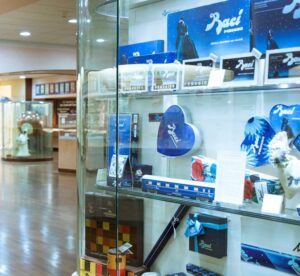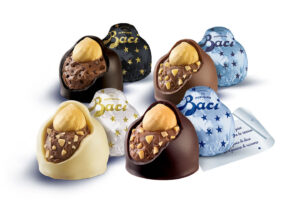 “Baci” Perugina chocolates, a genuine Made-In-Italy icon, are celebrating their 100th birthday this year. “Baci” means “kisses” and their birth and history is the product of a secret love story between their creator Luisa Spagnoli and businessman and politician Giovanni Buitoni, 14 years her junior.
“Baci” Perugina chocolates, a genuine Made-In-Italy icon, are celebrating their 100th birthday this year. “Baci” means “kisses” and their birth and history is the product of a secret love story between their creator Luisa Spagnoli and businessman and politician Giovanni Buitoni, 14 years her junior.
The Perugina chocolate confectionary company, based as always in the central Italian city of Perugia, although owned since 1988 by the Swiss food giant Nestlé, is celebrating this milestone by launching a special edition of “Dolce Vita Baci”. Its new recipe, to be released for Valentine’s Day 2022, has a lemon-flavored center and is coated by white chocolate with a hint of vanilla and completed with its ubiquitous whole hazel at its top. Its tin-foil wrappings and packaging are also new and colorfully designed by the fashion designers Dolce & Gabbana. These will contain the “100 Years Celebration Collection” and, separately of course, the “Limited Edition” of the “Dolce Vita Baci”.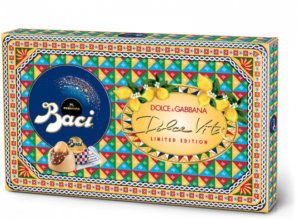
To start from the beginning, “Baci”’s creator Luisa Sargentini was born in Perugia to Pasquale Sargentini, a fishmonger, and to Maria Conti, a housewife, on October 30, 1877. At age 20 she married Annibale Spagnoli and, together with Leone Ascoli and Francesco Buitoni as their partners, in 1907 they bought out a grocery shop and renamed it “Perugina”. With 15 helpers Annibale started to make confetti and Luisa candies, chocolates and biscuits. Annibale and Luisa soon had three sons, Mario, Armando and Aldo. While her husband Annibale and her lover Giovanni were away serving in the First World War, Luisa with her sons Mario and Aldo expanded the business–by the armistice in 1918 they employed over 100 people.
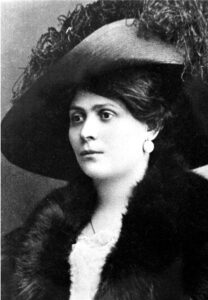
Luisa Spagnoli
In 1923 Annibale left the business in all likelihood because he’d discovered his wife’s love affair with Giovanni Buitoni, the son of one of Annibale’s partners Francesco. For it was in 1922 that Luisa came up with a brilliant idea to use chopped hazelnuts leftover from her other sweets as the center of a new creamy melted chocolate filling topped with a whole toasted hazelnut and encased in dark chocolate. Because its irregular shape reminded Spagnoli of the knuckles of a closed fist, she named her brainstorm “cazzotti” meaning “punches” in Italian. Ever-loving Giovanni persuaded her to soften the name to “Baci”, reasoning that people would prefer purchasing a kiss to a punch.
Very soon the Perugina art director from 1919-35 Federico Seneca, inspired by Luisa’s idea of inserting love messages as she and Giovanni had in their pre-War chocolates, decided to copy this unique idea for her bite-size “Baci”’s. He chose romantic texts by famous writers. For examples, “Love looks not with the eyes but with the mind”, a line in Shakespeare’s “Midsummer Night’s Dream”, and “Love is not only a feeling; it is an art”, by Balzac, just to name two.
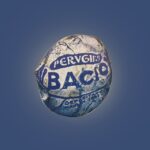
First wrappings
In addition to the love messages, in 1924 Seneca chose the silver tinfoil with blue writing to wrap each individual chocolate and devised the blue and silver box depicting a couple, possibly Luisa and Giovanni, dressed in black and kissing under a shower of stars in a passionate embrace. Seneca had undoubtedly been inspired by the Italian artist Francesco Hayez’s painting “The Kiss”.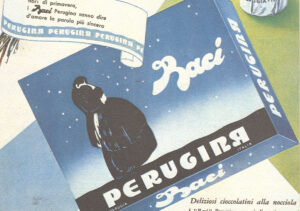

Hayez’s “The Kiss”
The combination of the recipe, name, secret messages, and packaging, made “Baci” an instant commercial success. Not to overlook Seneca’s design for one of the Kingdom of Italy’s first postage stamps depicting an advertisement for “Baci” in 1925.
Valentine cards have never been an Italian custom, but red roses and chocolates yes. In fact, a 1927 advertisement boasts: “In just five years, Perugina has sold over 100 milllion ‘Baci’”.
Other historical highlights:
-In 1939 Perugina opened its first flagship store in the USA, in New York on Fifth Avenue. Today its shops are located at 140 Plymouth Street in Brooklyn and at Eataly on Manhattan’s Union Square. These two outlets alone cover 20 percent of national sales, but outside New York City “Baci” are also on sale at Wal-Mart, and the supermarket chains Kroger and ShopRite.
-In 1968 blue stars were added to the silver foil wrapping.
-In 1981 Perugina added a tube containing 7 “Baci” each to its packaging.
-In 1972 Longanesi published Giovanni Buitoni‘s autobiography, “La Storia di un Impreditore”, which of course covers the history of “Baci”, his love for Luisa, and a moving passage about her premature death from throat caner on September 21, 1935. Nearly on her deathbed, Giovanni recounts, Luisa promised to help him find a new love before she died. In fact, a day after Luisa’s promise, he met the young opera singer Letizia Cairone and married her year later. They moved to New York for many years before returning to Italy, but they never lived in Perugia. Besides his connection to “Baci”, Buitoni also describes his important role in his own family’s pasta business of the same name from the 1920s until his retirmement in 1966, although he remained on its finance board until his death in Rome on Janaury 12, 1979. Instead to learn more about Luisa in 2019 Maria Letizia Putti published her bioagraphy : Luisa Spagnoli: La signora dei Baci. Today she is also well known for her namesake women’s fashion business which she founded immediately after World War One, but which didn’t take off until after her death under the direction of her son Mario.
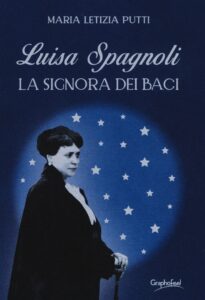
-From 1997-99 Alitalia painted in “Baci” wrappings its Boeing 747-200-I-DEMF “Portofino”, which flew between Rome and New York.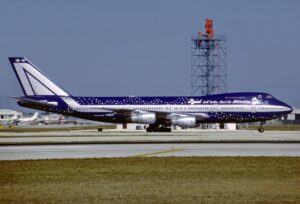
-In 2003 during the Eurochocolate, the world’s largest chocolate festival held annually in Perugia, the biggest “Baci” ever made: 2.15 meters high, 7.26 meters wide, and weighing 5,980 kilos entered the Guinness Book of Records. It took Perugina’s chefs over 1,000 hours to make.
-Between 2011 and today Perugina has added white chocolate, milk chocolate, extra dark 70% and a fruity center to its permanent “Baci” repertoire including a “Baci” spread in 2021. Over the years other variants had been less successful and lasted only a limited time.
-In February 2016 the two-part series “Luisa Spagnoli” was shown on RAI television, Channel 1.
-that same year Nestlé invested 20 million euros in Perugina’s headquarters as part of a 60 million euro three –year upgrade so as to conquer new markets.
-In addition to Italian, the love messages are published in Spanish, French, English, Chinese and Portuguese. Since 2017 they include 100 proverbs from nine Italian regional dialects: Campania, Lombardy, Umbria, Puglia, Liguria, Latium, Veneto, Sicily, and Piedmont. A study had showed Perugina that young Italians desire to learn the dying-out dialects of their ancestors. For examples, the Neapolitan idiom “ Ògne scarrafine è bell’a màmm” (every cockroach is beautiful in its mother’s eyes), the Milanese saying “I inamoraa guarden minge a spend’ (lovers don’t care how much they spend) or the phrase “A son mach le muntagne ch’a s’ancontro nen”(only mountains never meet) from the dialect of Perugia, the birth place and still home of “Baci”.
Today the Perugina company reports that 1,500 “Baci” are made every minute in Perugia, exported to 55 countries around the world, with half a billion “Baci” sold each year.
To return to this year’s birthday celebrations, for the general public the Perugina Chocolate House will present a yearlong exhibition about the history of its pride and joy “Baci”. Located at Viale San Sisto 207/c in Perugia, the House’s hours are Monday-Friday 9 AM-1 PM and 2 PM-5:30 PM, Saturday !0 AM-6 PM; closed Sunday. You can book your tour which ends with a tasting or your chocolate making lesion by telephoning 800 800 907 from Italy or from abroad 011-39-0245467655 or by writing to casadelcioccolatoperugina@servizio-clienti.it. Reservations are required.